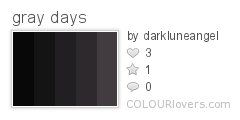Well I did, however what I really want to say is that colour could save our ass (sorry for the language) when used properly. Even in the Theory of Colour (don't run, I'll not be that boring; although this is a fascinating theme...) we have much to learn with nature.
 |
| Greater Blue-ringed Octopus (Hapalochlaena lunulata), via Bukisa |
Look to octopus, they're not very pretty (but I don't mind eat them: sorry vegans!), yet they're intelligent and can become beautifully astonishing, like in the picture. I'm sure you know that they've the ability of mimetic, but did you know that they really percieve colour? It's not only a function that their skin seems to have: it's observation, learning (really fast learning!) and adaptation. Cool, right?
 |
| via We Heart It, original by Gii Ferreira |
 |
| via Flickr, by Kanelongden |
So there are several ways of learning (reading, listening, touching, ...) and you can use one or more to take advantage of what you have in hands. I'll not specify them all because it is an extensive matter with many authors defending various ideas. To learn more about this, check the links I put in the end of the post.
 |
| via ffffound |
Back to colour and following the steps I gave you: nature, once again, should be the first place not only to get inspiration but to learn how to use colour (which colour goes well with another, the best contrasts, the warm and the cold ones, etc), then look to your favourite designer/painter/illustrator works. What do they have in common?
Only after that you are allowed to dive into the Theory of Colour, it's physics and philosophies, so you can agree or refute the ideas that are presented to you. Critical thinking is very important. And learn all you can: wisdom is power.
Then get your hands dirty and manipulate the colours yourself and when you feel good about it create your first masterpiece. Good luck!
__
Useful links
: The Five Ways of Learning, by Melanie Spiller :
: Ways of Learning, by Phillip Henning :
: Cultural Ways of Learning, by Kris Gutiérrez and Barbara Rogoff :
: Seven Ways of Learning, by Millicent Rogers Museum :
: Color Theory, by Workx.com :
: Color, by Internet Encyclopedia of Philosophy :



No comments:
Post a Comment